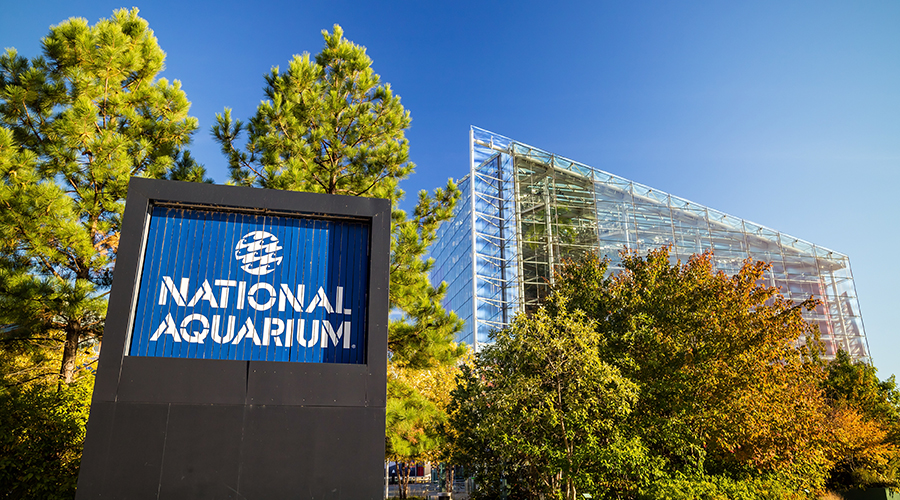Paints Set a New Green Standard
New regulations are demanding new-generation low-VOC paints that perform better than last decade’s pioneers
More than a decade ago, the paint industry took its first stab at reformulating solvent-based coatings laden with volatile organic compounds (VOCs).
Driven by the federal Clean Air Act revisions of 1996, paint and coatings manufacturers began developing new, environmentally friendly, solvent-free paint formulations. They hoped these new products would rival reliable and durable solvent-based coatings, in both application and finish, yet have far less environmental impact.
They succeeded in producing low- and no-VOC paint formulations, but the end result did not necessarily perform as well as customers expected.
Today, VOC regulations — on the federal, state and regional levels — continue to grow stricter, even as consumer demand for sustainable building practices increases. Painting contractors and facility professionals are demanding better, more durable green paints and coatings that are easy to apply and deliver an aesthetic punch.
“The industry is changing,” says Jeff Spillane, senior marketing manager, Benjamin Moore. “Green paints have become end-user-demanded products.”
This has put leading paint and coatings manufacturers in a constant research-and-development race to develop new environmentally friendly, high-performance products that also meet some of the strictest clean-air requirements — at a price contractors and facility professionals are willing to pay.
“We are at a point now where you can invent a low-VOC architectural paint without sacrificing performance or cost,” says Tom Dougherty, marketing manager for Pittsburgh Paints. “The technology has evolved in these product lines to the point that VOCs aren’t the focus. Performance is.”
Regulating VOCs
Twenty years ago, virtually no one outside a laboratory had ever heard of volatile organic compounds. That’s not to say VOCs weren’t around back then. They are found in everything from paints and coatings to cleaning supplies to health and beauty products.
These compounds vaporize at room temperature and enter the atmosphere, where they have been found to contribute to the creation of ozone, a common pollutant and public health hazard. In paints, VOCs have traditionally helped provide antifreeze capabilities and also boosted such performance factors as flow, leveling and curing. They help control thickness, hardness and smoothness of a paint finish.
The U.S. Environmental Protection Agency (EPA), for regulatory purposes, defines VOCs as “any volatile compound of carbon.” In addition to EPA, the South Coast Air Quality Management District (SCAQMD) — a regulatory agency for Southern California — tends to serve as the primary benchmark for the regulatory process, setting precedent for both state and federal regulations. Its VOC limit is 50 grams per liter for interior architectural coatings. The amount of VOCs in a traditional latex paint typically falls between 200 to 300 grams per liter. Traditional solvent-based alkyds may have 400 to 500 grams of VOCs per liter.
Concern about VOCs isn’t limited to California. The Ozone Transport Commission is a coalition of states — Connecticut, Delaware, Maine, Maryland, Massachusetts, New Hampshire, New Jersey, New York, Pennsylvania, Rhode Island, Vermont and Virginia — along with the District of Columbia that are working to reduce ground level ozone in the Northeast.
Five Midwestern states — Illinois, Indiana, Michigan, Wisconsin and Ohio — recently formed the Midwest Regional Planning Organization and are working to implement tighter VOC regulation targeted by January 2008. Other states, such as Texas and parts of Arizona, have their own regulations as well.
Meanwhile, the EPA is in the process of negotiating national VOC regulations that will be effective in all states, signifying one thing: Regulations on VOCs aren’t going away.
Back to the Drawing Board
Latex paints of 10 to 15 years ago were full of coalescent solvents and glycol (antifreeze) — both considered VOCs. These components are what evaporated out of the paint to speed up the curing and drying process.
“When you take those elements out of a coating and don’t replace them with something similar, you lose flow and leveling. You lose cure time,” says Spillane.
When low-VOC green paints were first introduced in the mid to late 1990s, the product designs tended to focus on what was not in the paint — i.e., harmful ingredients such as VOCs — rather than the fact that the removal of these ingredients might cause problems with application, touch-up, flow or leveling.
In an attempt to replace solvents, manufacturers added plasticizers or similar solids, which made the new, high-solids paints harder to handle than traditional latex and alkyd products.
“The first green paints often dried too fast during application,” says Leo Chippy, technical manager for Pratt & Lambert. “They didn’t leave a smooth finish and didn’t touch up as well. They forced painters to change the way they painted.”
And painters didn’t like it, says Steve Revnew, director of architectural marketing for Sherwin-Williams. “They were going from using average solids that would spread and flow easily to this real high-solids product to meet the new VOC requirements. It had heavy brush drag and wasn’t as quick drying. Unfortunately it gave low-VOC coatings a bad name.”
With the regulatory atmosphere growing increasingly strict, the paint industry realized it was time to go back to the drawing board. Their customers in many states didn’t have a choice. They needed to use low-VOC coatings. The challenge was to give them products that would perform and meet regulations.
“The perception across the country was that the first wave of waterbased, low-VOC coatings was horrible,” says Tim O’Reilly, business manager for primers and clear finishes at Zinsser. “Over the years, the continuing regulatory push toward even lower VOC content in coatings really drove industry development of waterbased technology, not only to make it more eco-friendly but also to boost performance.”
As a result, new water-based coatings are emerging in the marketplace and are performing near or at the same level as old-school solvent-based paints and primers, say manufacturers.
“VOC regulations are driving change in paint formulations,” says Linda Mitchell, brand manager for Zinsser’s Wallcovering Products. “In the past, performance characteristics have been difficult with the technologies out there, but the technology is improving and so is product quality.”
Manufacturers are coming up with proprietary technologies that help environmentally preferable coatings meet commercial performance demands and, in most cases, stringent regulations.
“It’s all in the resins,” Revnew says. “A lot of the technology today has reached well beyond what was there years ago in standard coatings. It really has advanced.”
Understanding Limitations
Low- and no-VOC coatings have come a long way in the past decade, and the quality continues to improve. These new-technology coatings are suited for use in many commercial settings. Interior architectural coatings have gained the widest acceptance, particularly in occupied spaces thanks to their low odor. The acceptance for low-VOC exterior coatings has been a bit slower, Dougherty says.
“The technology needed is different on the exterior side. It is difficult to get these coatings to work in a below-40-degree environment because of the lack of anti-freezing agents,” he says.
There are other applications in which water-based low-VOC coatings are not ideal, say some manufacturers. Mechanical rooms, rooftop equipment and other industrial settings that require protection with high-performing, long-lasting products often fall into this category.
“When you get into industrial environments, you cannot get the same performance out of a low- or no-VOC waterborne coating,” says Scott Cross, director of marketing at Rust-Oleum. “If you have greasy dirty substrates, many low-VOC coatings don’t have the level of surface tolerance that a traditional solvent-based coating has, and that will lead to delamination and early corrosion. Zero-VOC coatings also will not offer the same level of chemical resistance and film formation that you will get with traditional solvent-based coatings.”
The answer for many of these applications is elastomeric high-build coatings, some of which are said to perform close to zinc epoxy urethane systems, the traditional gold standard of industrial coatings.
The key issue, Cross says, is price. Cost on eco-friendly industrial coatings remains relatively high, with prices for such products reaching $50 to $60 per gallon.
Today, facility executives and the painters they work with already are more savvy to environmentally friendly products and sustainable building practices. Low-VOC coatings aren’t new to them. They’re becoming a fact of life.
“They have been more exposed to water-based products and don’t have much experience with the solvent-based ones,” Revnew says. “Suppliers are no longer investing in alkyd technology because the demand for solvent-based coatings is diminishing.”
Looking Ahead
Consumer demand and increased government regulations are at the forefront of the green paint movement.
Paint manufacturers say this demand has made the development of more eco-friendly coatings a standard goal in their R&D labs. The need for low- and no-VOC paints will continue to drive future market opportunities. Development isn’t coming to an end; it’s just starting, manufacturers say.
“We’re continuing to address VOC issues in all of our product lines without hindering quality. In fact, we’re looking to improve quality,” Dougherty says. “It’s a case of market and societal trends driving an industry toward product improvement.”
Robin Suttell is a freelance writer who has written extensively about building design, construction and operations issues.
Related Topics:











